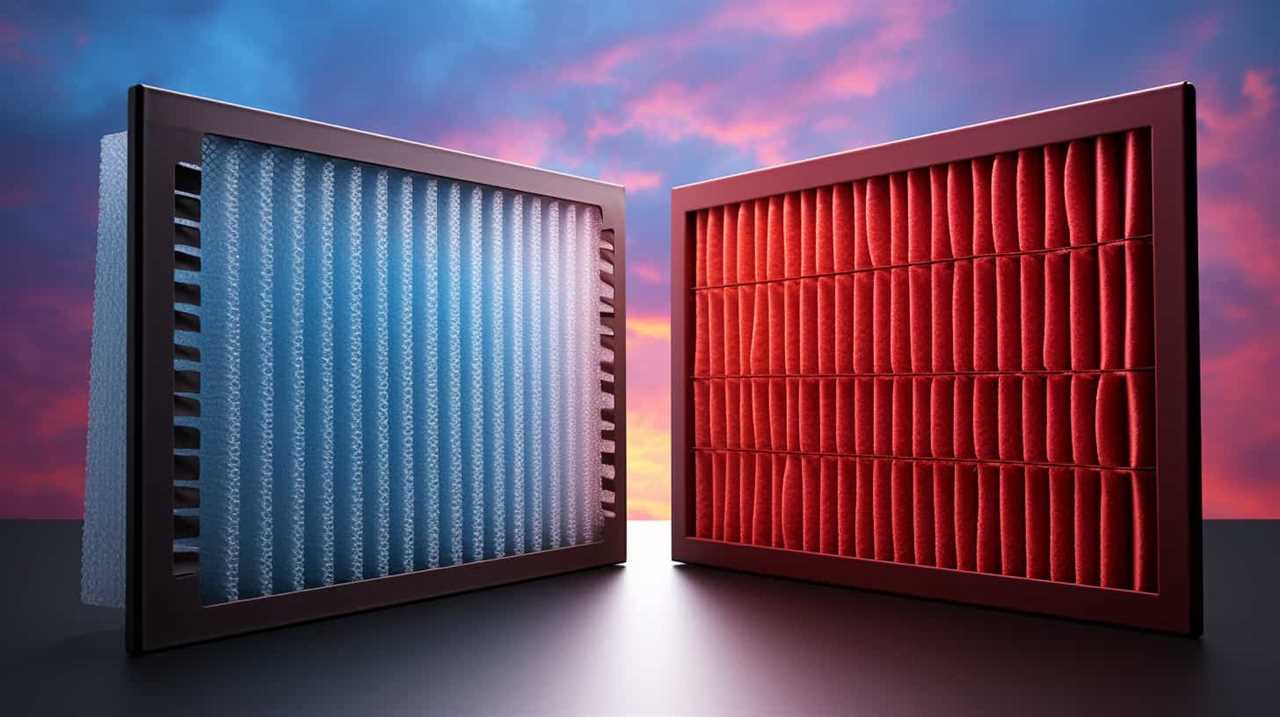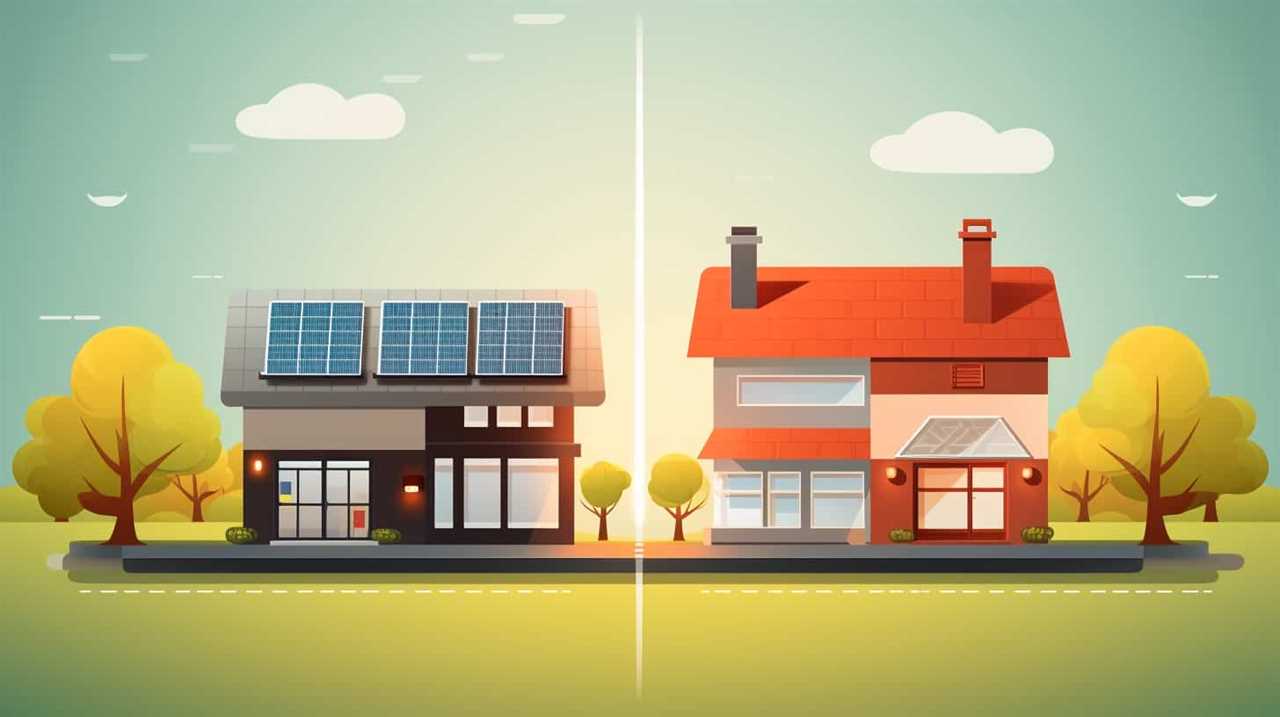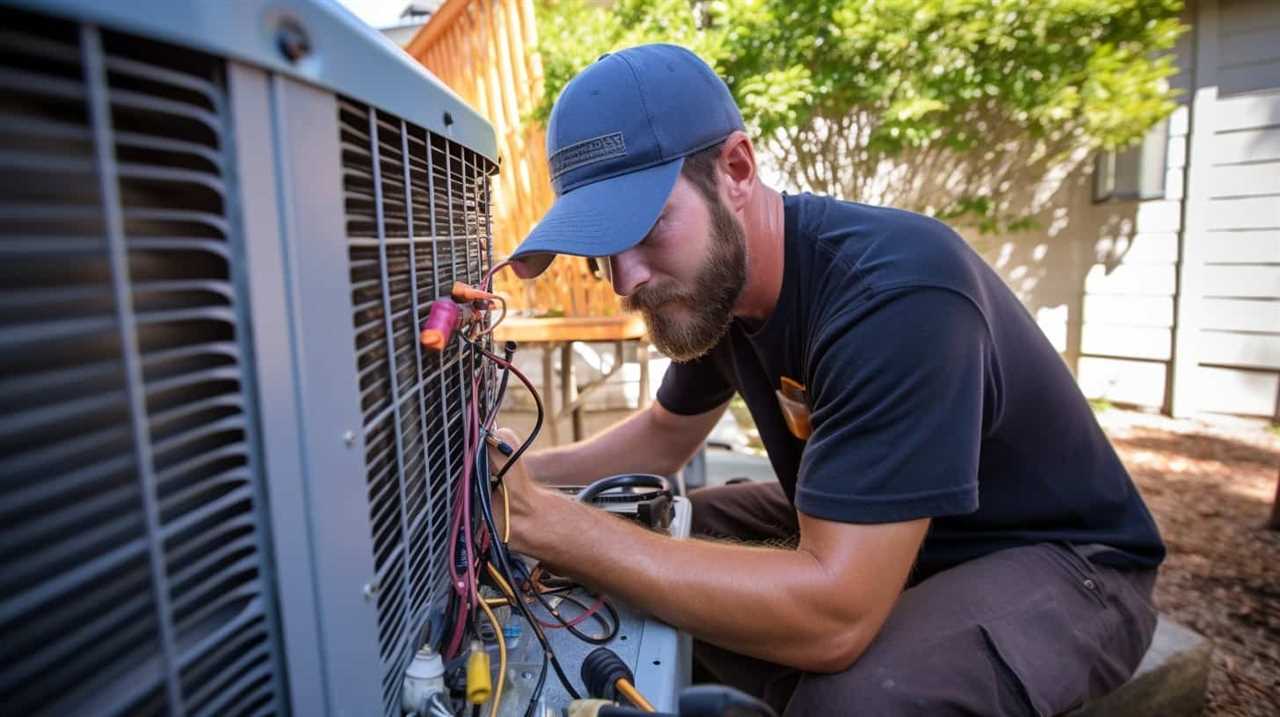We’re here to explain why heat pumps are essential for energy-efficient building design. These amazing devices play a crucial role in sustainable construction, utilizing cutting-edge technology to optimize energy efficiency.
By harnessing the power of heat pumps, we can create sustainable architecture that not only saves energy but also reduces our carbon footprint. In this article, we’ll explore how heat pumps can help us achieve eco-friendly construction and maximize energy savings.
Get ready to master the art of energy efficiency with heat pump systems.
Key Takeaways
- Heat pumps offer a low environmental impact solution for energy-efficient architecture.
- Heat pumps provide both heating and cooling capabilities, reducing energy consumption.
- Heat pumps utilize renewable energy sources like air, water, or ground heat.
- Heat pumps seamlessly integrate into eco-friendly construction practices, contributing to sustainable buildings.
The Role of Heat Pumps in Green Building Practices
In our green building practices, heat pumps play a crucial role in achieving energy efficiency. As we explore heating alternatives, it becomes evident that heat pumps offer an effective solution with low environmental impact.

Heat pumps work by transferring heat from one area to another, using a small amount of energy to move heat rather than generate it. This process makes them highly efficient, with an average coefficient of performance (COP) of 3 to 4. This means that for every unit of electricity consumed, a heat pump can produce three to four units of heat.
Compared to traditional heating systems, such as gas furnaces, heat pumps can reduce energy consumption by up to 50%. This translates to significant cost savings and a substantial decrease in greenhouse gas emissions.
With their ability to utilize renewable energy sources, such as air and ground heat, heat pumps contribute to the sustainability goals of green building practices.
Moving forward, let’s delve into the specifics of energy efficiency and heat pump technology.

Energy Efficiency and Heat Pump Technology
We can achieve optimal energy efficiency by incorporating heat pump technology into our architectural designs. Heat pumps are highly efficient systems that can provide both heating and cooling, making them an ideal choice for reducing energy consumption and achieving energy savings in buildings. Here are four reasons why heat pump technology is essential for energy-efficient architecture:
-
Energy savings: Heat pumps can extract heat from the air, ground, or water, and transfer it into or out of a building. This process requires significantly less energy compared to traditional heating and cooling systems, resulting in lower energy consumption and reduced utility bills.
-
Renewable energy: Heat pumps can utilize renewable energy sources such as geothermal heat or solar thermal energy, further enhancing their energy efficiency and sustainability.
-
Versatility: Heat pumps can be used in various applications, including residential, commercial, and industrial buildings. Their flexibility allows for customized solutions that meet specific energy efficiency goals.

-
Low greenhouse gas emissions: Heat pumps produce fewer greenhouse gas emissions compared to conventional heating and cooling systems. By reducing carbon footprint, they contribute to a cleaner and more sustainable environment.
Harnessing the Power of Heat Pumps for Sustainable Architecture
By effectively harnessing the power of heat pumps, we can create sustainable architecture that maximizes energy efficiency and minimizes environmental impact.
Heat pump installation offers several key benefits when it comes to designing and constructing energy-efficient buildings. Firstly, heat pumps provide both heating and cooling capabilities, eliminating the need for separate systems and reducing energy consumption.
Additionally, heat pumps utilize renewable energy sources such as air, water, or ground heat, making them highly efficient and environmentally friendly. These systems can achieve high levels of energy efficiency, with some models boasting a coefficient of performance (COP) of up to 4. This means that for every unit of electricity used, the heat pump can generate up to four units of heat or cooling.

Maximizing Energy Savings With Heat Pump Systems
To achieve maximum energy savings, we can optimize heat pump systems by implementing efficient controls and regular maintenance. By doing so, we can significantly improve building performance and reduce our carbon footprint.
Here are four key strategies to maximize energy savings with heat pump systems:
-
Control Optimization: Using advanced control algorithms and sensors, we can ensure that heat pumps operate at their optimal efficiency levels, minimizing energy waste and reducing operating costs.
-
Seasonal Performance Adjustments: By adjusting heat pump settings based on seasonal variations, we can optimize performance and energy consumption, ensuring that the system operates efficiently year-round.

-
Regular Maintenance: Regular inspections, filter replacements, and system cleanings are essential to keep heat pump systems running at peak efficiency. This not only prolongs the lifespan of the equipment but also maximizes energy savings.
-
System Integration: Integrating heat pump systems with other energy-efficient technologies, such as solar panels or energy storage systems, can further enhance their performance and overall energy savings.
Why Heat Pumps Are Crucial for Eco-Friendly Construction
Implementing heat pumps is crucial for achieving eco-friendly construction, as they significantly reduce energy consumption and carbon emissions. Heat pumps are a key component of eco-friendly heating systems, providing renewable energy solutions that contribute to a more sustainable built environment. By utilizing heat pumps, buildings can effectively harness the heat from the ground, air, or water to warm spaces in a highly efficient manner. This reduces the reliance on traditional heating methods that rely on fossil fuels, resulting in lower carbon emissions and a smaller ecological footprint. Heat pumps also offer the advantage of being versatile, as they can provide both heating and cooling, further enhancing their energy-saving capabilities.
To highlight the benefits of heat pumps in eco-friendly construction, consider the following table:

| Benefits of Heat Pumps in Eco-Friendly Construction | ||
|---|---|---|
| Significantly reduce energy consumption | Lower carbon emissions | Utilize renewable energy sources |
| Highly efficient heating and cooling | Versatile for various building types | Lower ecological footprint |
Frequently Asked Questions
What Are the Different Types of Heat Pumps Available in the Market?
There are several types of heat pumps available in the market, each with its own level of efficiency and benefits. These pumps help in achieving energy-efficient architecture by efficiently transferring heat from one place to another.
Are Heat Pumps Suitable for All Types of Climates and Regions?
In extreme climates, heat pumps can maintain efficiency by adapting to varying weather conditions. They effectively provide energy-efficient heating and cooling solutions for all types of climates and regions.
What Is the Lifespan of a Heat Pump System?
The lifespan of a heat pump system varies depending on factors such as maintenance, usage, and climate. However, with proper care and regular maintenance, a well-installed heat pump can last up to 15-20 years.
Can Heat Pumps Be Integrated With Existing Heating and Cooling Systems?
Heat pump integration with existing heating and cooling systems offers numerous advantages. Retrofitting allows for improved energy efficiency, reduced operational costs, and increased comfort. It is a smart choice for any architecture seeking sustainability and long-term savings.

What Are the Maintenance Requirements for Heat Pump Systems?
Regular maintenance is crucial for heat pump systems. It ensures optimal performance and prevents potential issues. Heat pump troubleshooting is simplified through routine checks, increasing the longevity and efficiency of the system.
Conclusion
In conclusion, heat pumps play a crucial role in energy-efficient architecture by harnessing renewable energy sources and maximizing energy savings. Their advanced technology allows for sustainable and eco-friendly construction practices.
By utilizing heat pump systems, buildings can reduce their carbon footprint and contribute to a greener future.
So, let’s embrace the power of heat pumps and build a more sustainable world, one anachronism at a time.










